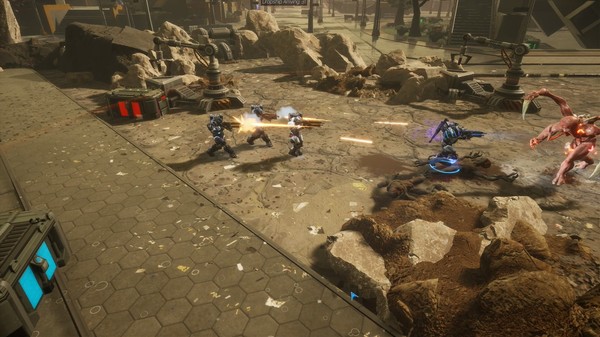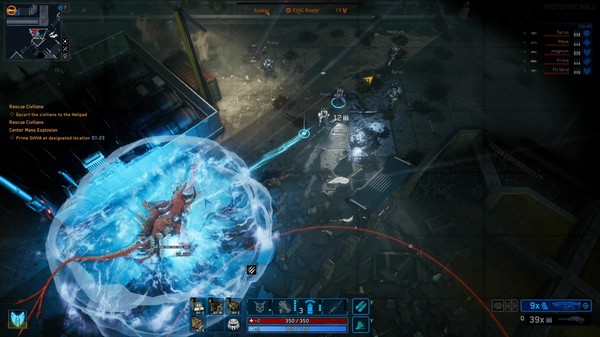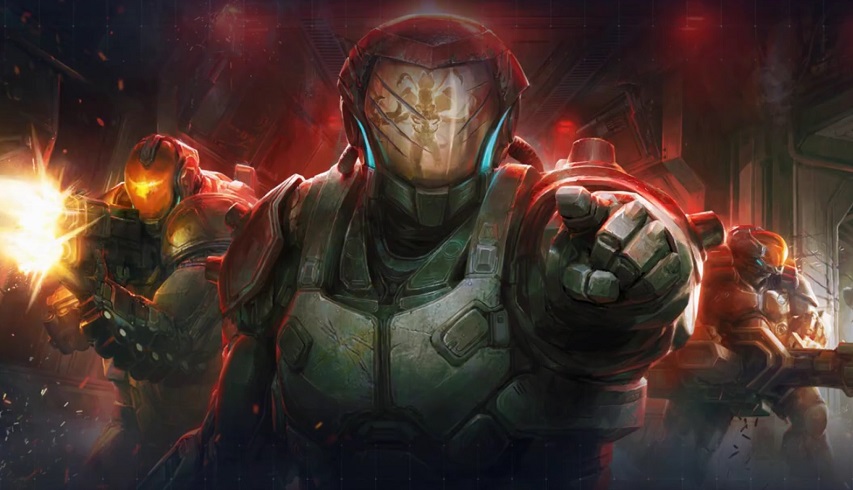Released in June by developer Ironward and the ubiquitous publisher 505 Games, Red Solstice 2: Survivors is the sequel to Ironward’s self-published 2015 game, The Red Solstice. After some introductory narration and a tutorial, Survivors threw me onto, appropriately for its title, the surface of Mars, and left me to figure out the rest for myself.
Players assume the role of the Executor, a Doomguy- (or Master Chief-eqsue, if you prefer Halo) badass super soldier tasked with cleansing Mars of a scourge of mutant monstrosities. Your avatar of ass-kicking can be fully customized, from his armor’s color scheme and weapon loadout, down to his skill-altering chipset. Like a battery backup for your PC, the Executor’s armor has a certain amount of load it can power, with chips that improve your defense, movement speed, or grant abilities, all taking up various amounts of the maximum power load. Each category of chips – offensive, defensive, and support – can be moved around and replaced to give you full control over how your character plays. There’s even a skill tree with branches related to personal stat boosts, squad stat boosts, and proficiency against specific mutants.

Using an isometric view, Survivors plays like a hybrid of Diablo and XCOM, with the real-time movement and clicking of Diablo crossed with the tactical emphasis and resource management of XCOM. Like XCOM, the game is divided into two sections, a world map focused on threat and resource management, and combat missions. Like Diablo, players can loot supplies in missions and move around freely without any kind of turn-based restraint. Unlike Diablo, however, no loot is kept between missions and loot is never equipment, only useable items. The variety of these items is remarkable though, with everything from healing items to mines and turrets and more.
Before each mission, players can adjust certain factors related to your current level of technology, as well as customize your squad. Players can bring three AI squad mates into each mission along with their Executor, and, again like XCOM, can customize their squad’s weapon loadouts and level up their class abilities. Sticking once again with the similarities, weapons are made available through research, as well as armor upgrades, but armor upgrades apply universally instead of being unique to specific armor types that need to be equipped.
Once players are in a mission, side missions can pop up and give the player additional opportunities to earn experience and recover supplies, but at the risk of an increasing threat level. The longer a mission lasts, the higher the threat level of the mutant horde increases. I experienced some missions where I could complete every side mission comfortably and then complete the main mission with no problem, and other missions where as soon as I tried to do one additional side-mission, I was overwhelmed and curb-stomped by mutants. Players getting one too many mutant curb-stomps, however, can join in on a co-op session and level a multiplayer Executor separately, joining others in skirmishes or helping with campaign missions (or getting help for their own, albeit on a separate save file).
These are all strengths and make up the bulk of Survivors’ gameplay loop, even if the multiplayer is currently a bit of a ghost town. Where the game seems to struggle, however, is connecting the missions with the rest of the game.

World map gameplay consists of managing each region’s intel and infestation levels, but unlike the in-mission gameplay, which has a clear and well-designed tutorial, the world map, research management, threat management, and population systems are barely explained, if at all. I was able to figure out how to research gear and upgrade my ship, but the other systems desperately need a bit more in-game guidance on their functions and importance. Yes, XCOM can smack players over the head with bright red “CHINA HAS LEFT THE XCOM PROGRAM” messages, but you also have a clear understanding of why those consequences happened.
On the positive side, especially for having a birds-eye-view, Survivors’ is very pretty and runs smoothly, and even when being neck deep in mutants and graphical effects like explosions and fire, my gaming laptop ran everything perfectly, even on the highest settings, including some very impressive lighting effects. The ambient sound is good, the music appropriately foreboding or intense depending on the scenario you find yourself in, and the voice acting is serviceable, but sparing. Not that the voice actors had much to work from, as the story in Survivors seems to have been mostly an afterthought, even in its single player campaign. Is that a negative? The answer largely depends on the player, but with a new baby in the house as I tried to play the game and write this review, the last thing I had time for lately is reading a codex for lore or explanations. For those with the time, however, the codex did seem to have some interesting entries.

Red Solstice 2: Survivors is a good game, but one that needs work. I would love to see a Red Solstice 3 someday where Ironward leans even more heavily into squad equipment with refined resource management systems. At the end of the day, yes, that kind of just sounds like XCOM-but-a-shooter, but I can’t be the only person who thinks that’d be a good thing.
Score – 7/10 – Review code supplied by publisher




